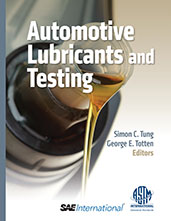Technical Paper
Numerical Modeling and Experimental Investigations of EGR Cooler Fouling in a Diesel Engine
2009-04-20
2009-01-1506
EGR coolers are mainly used on diesel engines to reduce intake charge temperature and thus reduce emissions of NOx and PM. Soot and hydrocarbon deposition in the EGR cooler reduces heat transfer efficiency of the cooler and increases emissions and pressure drop across the cooler. They may also be acidic and corrosive. Fouling has been always treated as an approximate factor in heat exchanger designs and it has not been modeled in detail. The aim of this paper is to look into fouling formation in an EGR cooler of a diesel engine. A 1-D model is developed to predict and calculate EGR cooler fouling amount and distribution across a concentric tube heat exchanger with a constant wall temperature. The model is compared to an experiment that is designed for correlation of the model. Effectiveness, mass deposition, and pressure drop are the parameters that have been compared. The results of the model are in a good agreement with the experimental data.


